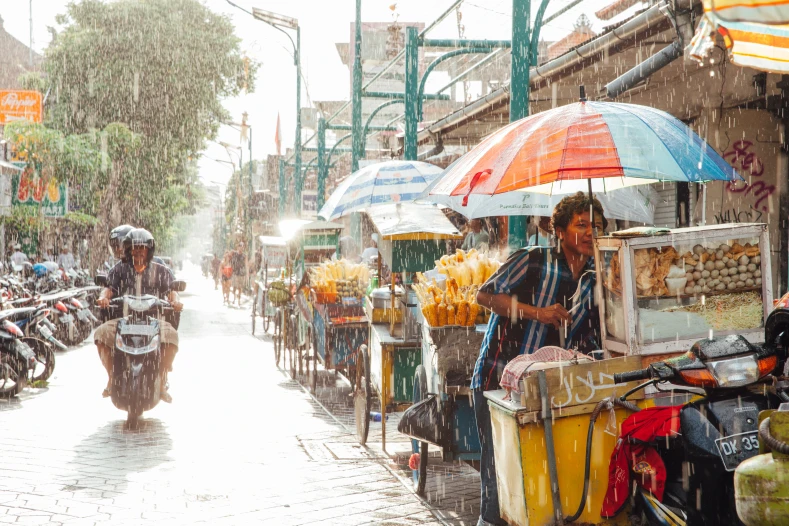The freshness of the dry season in Bali has suddenly been replaced by record high temperatures during the transitional period. October is traditionally the hottest month of the year on the island, with daytime temperatures reaching 33–34 °C and not a cloud in the sky.

The Indonesian meteorological agency BMKG recorded an extreme level of ultraviolet radiation – the so-called “purple zone.” It means it is especially important now to protect oneself not only from high temperatures and overheating but also from the impact of direct sunlight. Tourists and residents are advised to limit sun exposure, especially between 10:00 AM and 4:00 PM, and to use sunscreen.
The heat in Bali is not due to a local anomaly but to natural seasonal processes. The sun has now moved south of the equator – the so-called “apparent movement of the sun.” In October, it is directly over the southern regions of Indonesia, including Bali, Java, and Nusa Tenggara. This makes solar radiation almost direct and significantly intensifies the heating of the surface.
An additional factor is the active Australian monsoon. This seasonal wind brings dry and warm air, resulting in almost no cloud formation over the island. Without a cloud filter, solar radiation reaches the surface in full intensity. This is why even at temperatures of 32–33 °C, the heat feels more intense.
In recent days, temperatures in central and southern areas of Indonesia, including Java, Kalimantan, and Nusa Tenggara, have reached 35–37 °C. But in Bali, according to BBMKG, the maximum values remain within 34 °C. Meteorologists emphasize that such figures are consistent with the seasonal norm and are not considered extreme for October. However, with low humidity and high ultraviolet levels, even 33 °C can feel like 40.
BMKG advises that it is best to spend most of the time in the shade, wear light, loose clothing, hats, and sunglasses, and use sun protection creams.
Infrastructure also needs protection in such weather. Therefore, a preventive cooling was carried out at the main Bali landfill TPA Suwung using two fire trucks. Their task is to stabilize the temperature and prevent the occurrence of fire sources in the waste mass. Dry heat and changing winds create dangerous conditions: the methane released from the waste can ignite even with a slight temperature increase.
Prevention at the landfill is part of a broader strategy to prepare for a prolonged dry season and extreme heat. The city administration urges residents not to burn waste and to immediately report any signs of smoke or burning odors to the fire department.
BMKG forecasts that the heat will continue until late October or early November 2025. After this, with the onset of the rainy season and increased cloud cover, the temperature will gradually decrease.


You can add one right now!